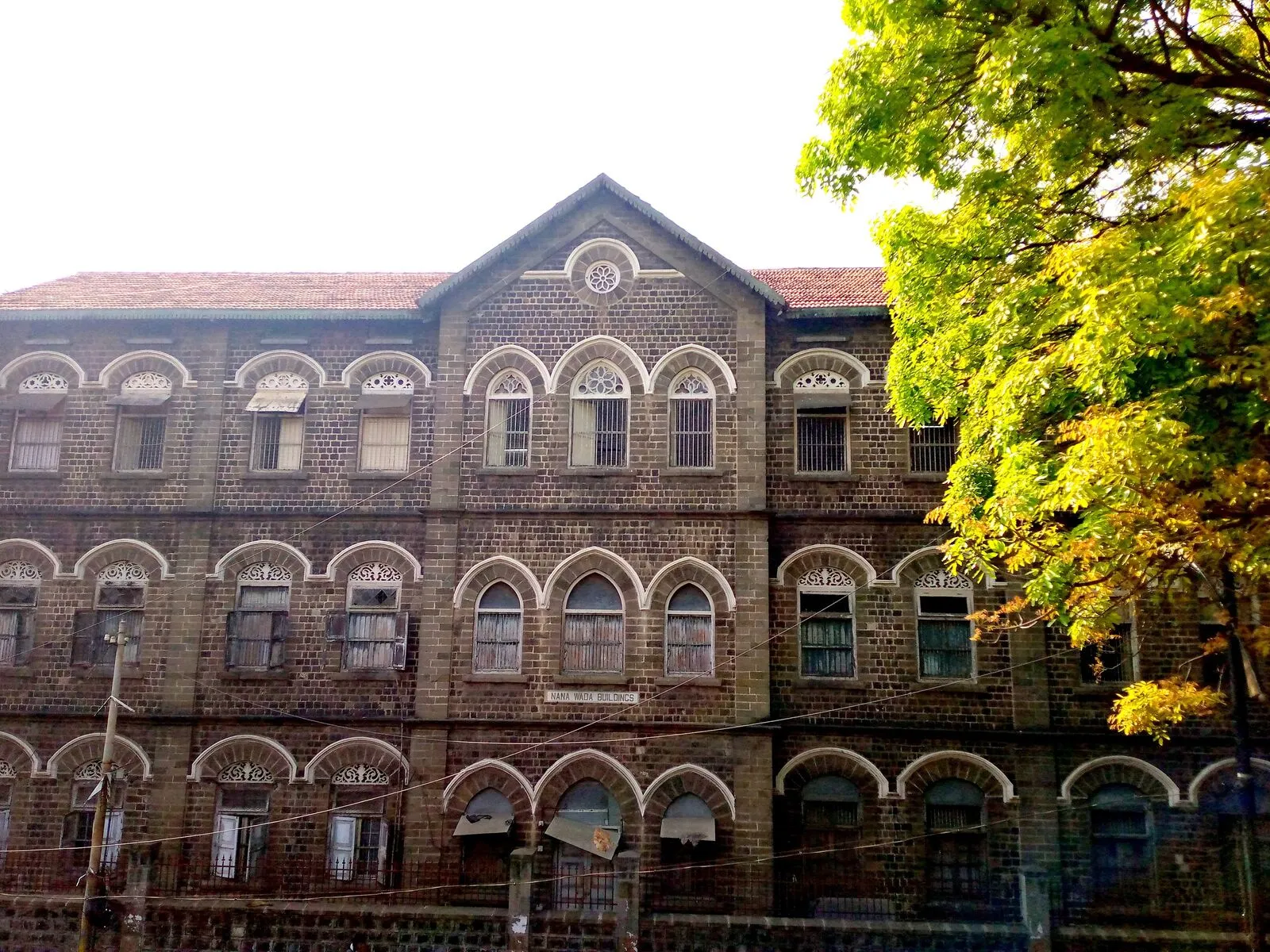Nana Wada Pune: History, Architecture & Visitor Guide
Share this article
Explore Nana Wada in Pune, the historic mansion of Nana Phadnavis. Discover its Maratha architecture and significance.
Discover the History of Nana Wada in Pune
Nestled in the vibrant heart of Budhwar Peth, Pune, just a stone's throw from the iconic Shaniwar Wada, lies Nana Wada. This historical landmark, officially located at 715, PMC Vidyalaya Rd, served as the residence of Nana Phadnavis, a pivotal statesman and administrator of the Maratha Empire. Constructed around 1780, this wada (traditional mansion) stands as a significant remnant of the Peshwa era's architectural and political grandeur.
Nana Wada, spread over approximately 20,000 square feet, is a superb example of 18th-century Maratha architecture. It features intricate wooden carvings, including traditional motifs like banana flowers and cypress-shaped pillars, characteristic of the period's craftsmanship. The wada's design, with its multiple rooms and courtyards, offers a glimpse into the lifestyle and administrative functions of a high-ranking official during the Maratha rule.
The primary reason to visit Nana Wada is to connect with Pune's rich historical past. While parts of the wada are currently utilized for government offices and a school, the accessible sections, particularly the ground floor, showcase the impressive original architecture. There are efforts underway by the Pune Municipal Corporation to establish exhibitions focusing on Maratha culture, the history of the Peshwas, and India's freedom struggle, which will further enhance its appeal as a historical site.
For those interested in history and architecture, Nana Wada offers a less crowded alternative compared to the bustling Shaniwar Wada. It provides a quieter space to appreciate the finer details of Peshwa-era construction. While local cuisine is best explored in the surrounding Budhwar Peth area with its numerous eateries and street food options, visiting Nana Wada itself is a step back in time.
Travel tips include checking the current accessibility, as only the ground floor is consistently open to the public. Tickets are typically available at the entrance. Combining your visit with nearby historical sites like Shaniwar Wada and Vishrambaug Wada offers a comprehensive historical tour of central Pune. The best time to visit Pune is during the cooler months, from October to March, avoiding the monsoon season (June to September) and the hot summer (April to May). During the cooler season, exploring historical sites is much more pleasant. Seasonal advice: Pune can get quite warm, so carrying water and visiting in the early morning or late afternoon is advisable, especially outside of winter. While Nana Wada itself may not take a full day, its proximity to other key historical sites makes it a valuable stop on a Pune heritage trail.
Remember to inquire about any ongoing exhibitions or restoration work that might affect your visit. Despite its current state, Nana Wada remains a significant historical structure, offering valuable insights into the Maratha era and the legacy of figures like Nana Phadnavis.
Why Visit Nana Wada?
- Architectural Gem: Admire the detailed wooden carvings and traditional Peshwa design.
- Historical Significance: Stand in a building once central to the Maratha administration.
- Quiet Reflection: Experience history in a setting less crowded than other major landmarks.
- Future Exhibits: Anticipate upcoming exhibitions on local history and freedom fighters.
- Proximity: Easily combine your visit with other major Pune historical sites.
Embark on a journey through time at Nana Wada, a testament to Pune's enduring heritage.
LOCAL HIGHLIGHTS
Peshwa-Era Architecture
Explore the intricate wooden carvings, arches, pillars, and overall design characteristic of Maratha period mansions.
💡 Look closely at the details on the wooden beams and columns for traditional motifs.
Ground Floor Halls & Rooms
Walk through the accessible ground floor areas that retain much of their original structure and feel.
💡 Imagine how these spaces were used daily by Nana Phadnavis and his household.
Potential Museum Areas
Sections planned or partially used for exhibitions on Maratha culture, Peshwa history, and freedom fighters.
💡 Check if any temporary or permanent exhibits are open during your visit for deeper historical insight.
Courtyard View
Get a view of the internal courtyard structure, typical of wada architecture, from the accessible areas.
💡 The courtyard design was crucial for light, ventilation, and internal access in traditional homes.
Location Adjacent to Shaniwar Wada
While not part of Nana Wada itself, its close proximity is a major draw, highlighting the historical core of Pune.
💡 Visit Shaniwar Wada before or after Nana Wada for a fuller historical perspective.
TIMINGS





